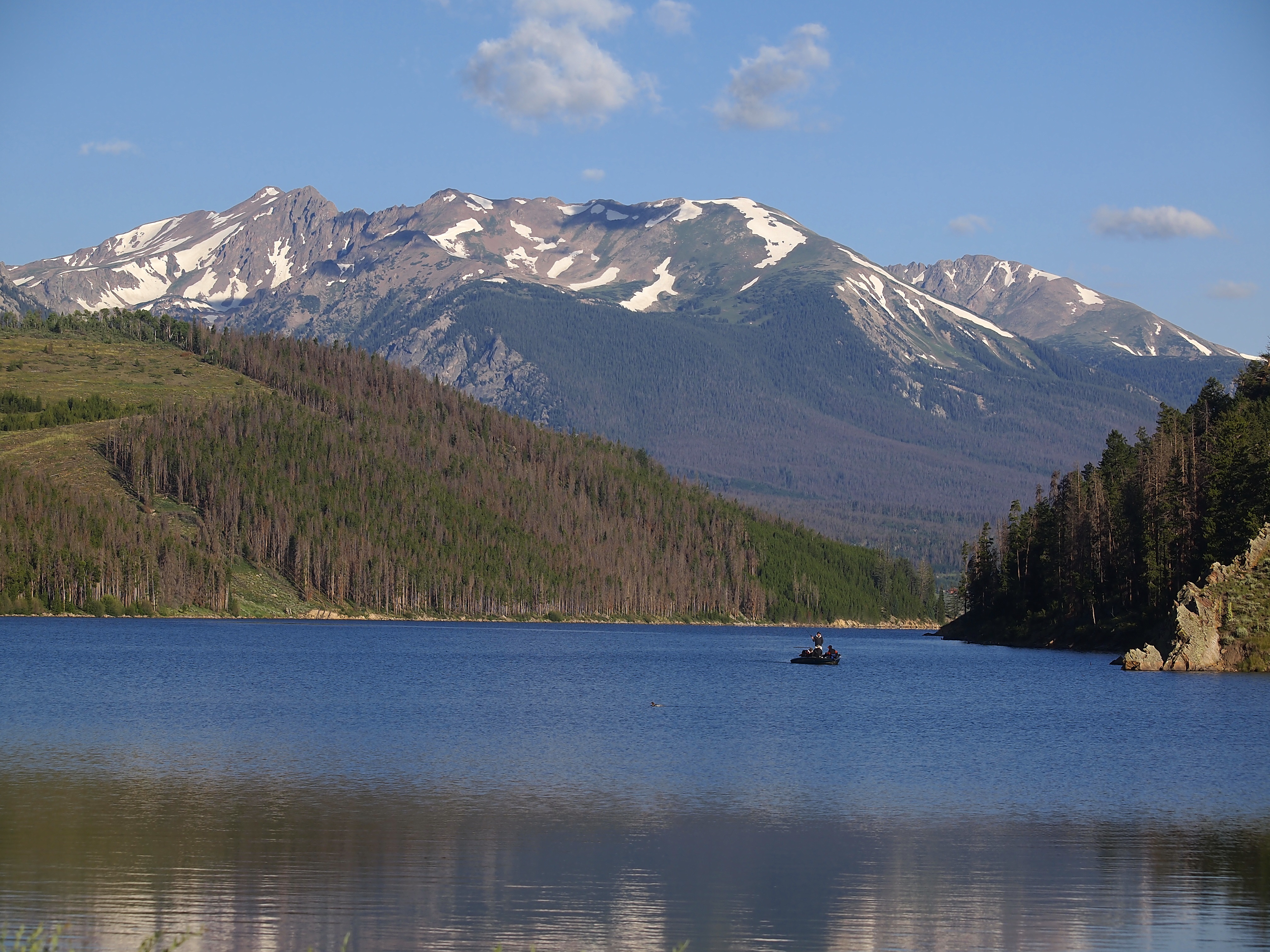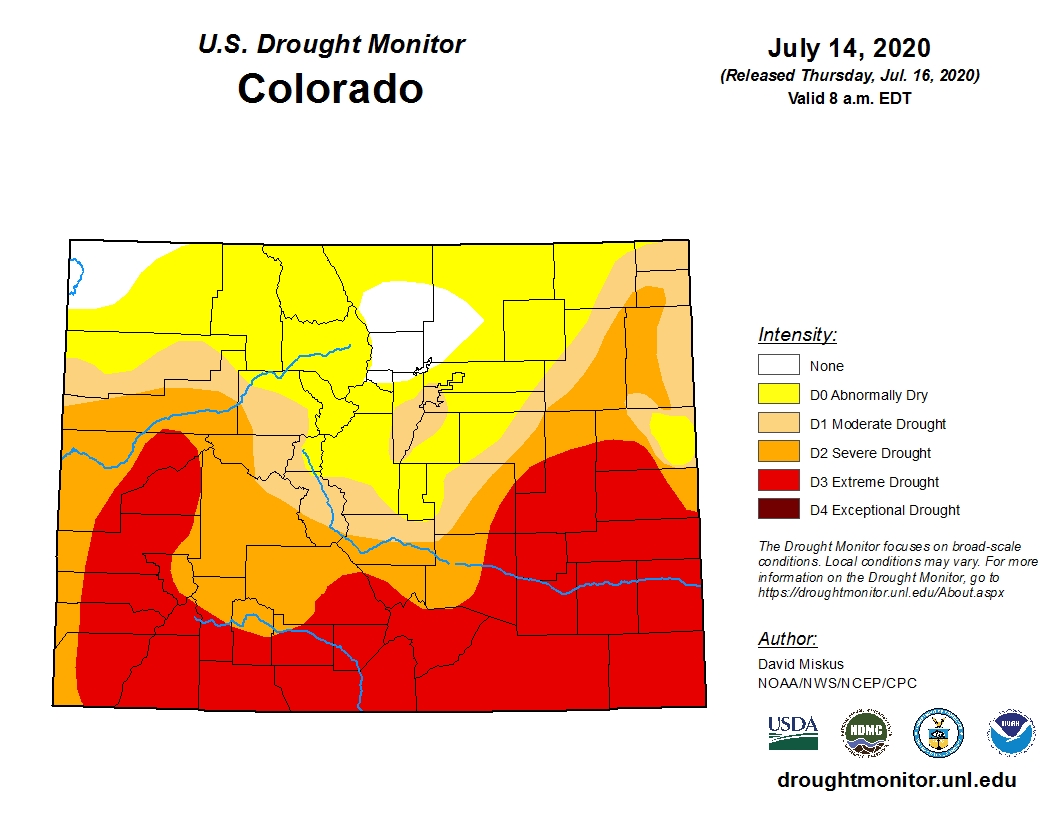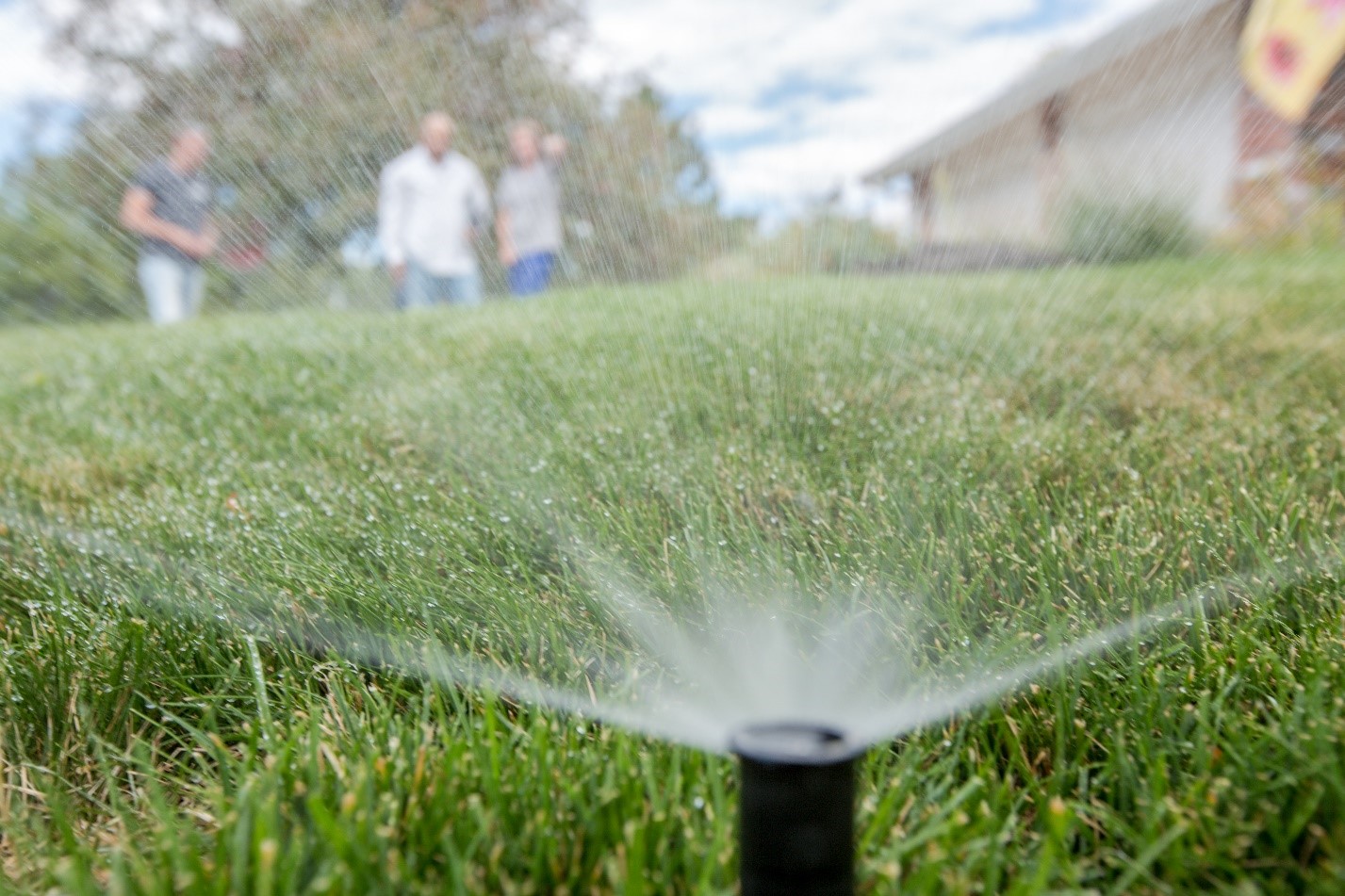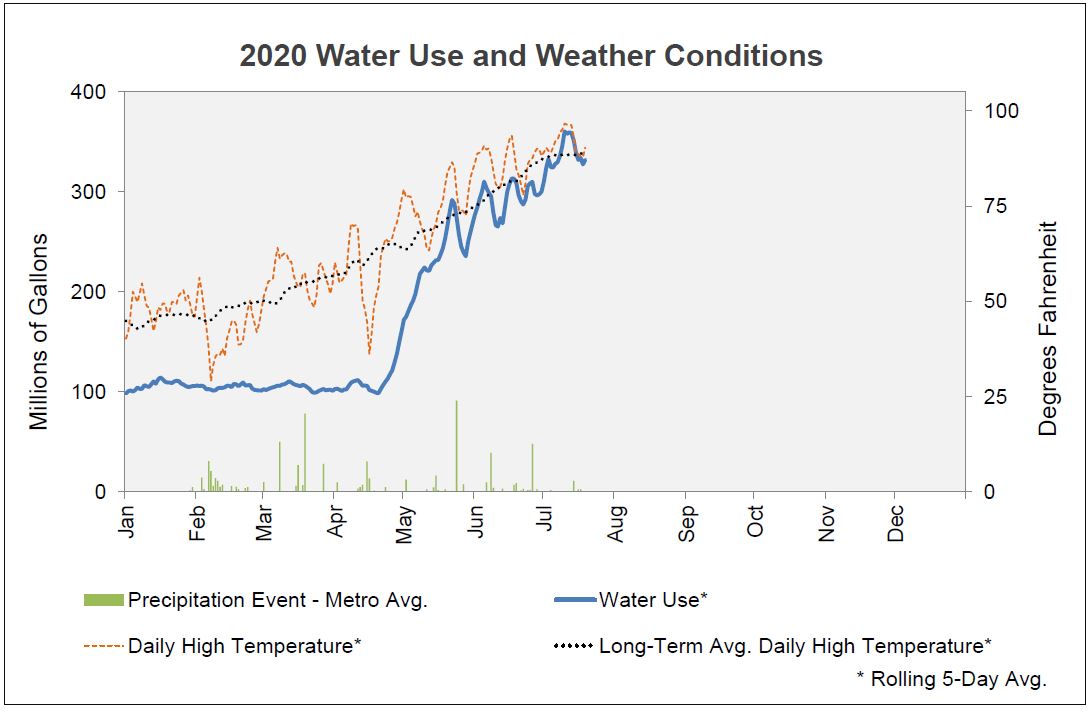
One eye on the weather, the other on water use
The early forecasts were right: This really is turning into a hot, dry, nasty summer.
And it’s a summer that has Denver Water planners keeping a close eye on weather forecasts and water usage, while customers across the metro area respond to the string of temperatures in the 90s and very little rain by using more water than during a typical year to help their lawns and landscape endure.
“We currently have a good water supply to meet customers’ needs for 2020, but conditions are trending toward the drier side,” said Jason Finehout, the coordinator for Denver Water’s Water Shortage Committee.
The committee’s core team and the entire group are scheduled to meet multiple times over the next few months to keep close tabs on the situation through the summer and likely into the fall if the hot, dry pattern continues as expected, Finehout said.
Short-term weather forecasts call for hot, dry conditions through much of July. Long-term outlooks say above-normal temperatures will hang around for the next few months.
And the U.S. Drought Monitor in mid-July classified all areas in Denver Water’s collection system as abnormally dry.
“We’re in pretty good shape for this year in terms of water supply, but we need customers to be vigilant about following our regular, summer watering rules — especially this year with it being so hot and dry,” said Nathan Elder, Denver Water’s manager of water supply.
“Using only what we need now will help keep as much water as possible in the reservoirs, because we never know when we’re at the beginning of the next drought.”
The hot, dry summer follows what was a good winter in terms of the snowpack in Denver Water’s watersheds, the high-country mountains and valleys that are buried under drifts of snow in the winter.
That snow, come spring and summer, melts and allows water to flow down streams and rivers into the utility’s reservoirs, where it can be captured and held until needed.
The snowpack this year in the South Platte and Colorado river basin watersheds that feed Denver’s water supply peaked April 26 at about 125% of normal. But the amount of water that flowed into the reservoirs was far below average.
For example, at Denver’s Strontia Springs Reservoir in Waterton Canyon, the natural steam flow during the spring runoff, from April through June, was just 55% of normal.
Filling the reservoirs was more difficult this year due in large part to the combination of dry soil, wind, below-normal precipitation in May and above-normal temperatures throughout the spring. Those factors combined to slash the amount of snowmelt available for capture by the Denver Water’s network of reservoirs, Elder said.
Water storage levels across Denver Water’s reservoirs peaked July 1 at 95% of capacity, not quite completely full.
At the same time, customers have reacted to weeks of hot temperatures by using more water than in past years.
Overall water use in June was 15% above the five-year average, but on par with what planners expected due to the hot dry conditions.
“It was not higher than expected — given the weather we had last month. June was hotter and drier than 63% of previous years that we have records for,” Ryan Shepler, one of Denver Water’s water use planners.
And, even though June water use was higher than the five-year average, it was still more than 20% lower than water use during similarly hot, dry stretches in past years. The reduction in overall water use comes despite significant population growth in recent years.
One thing that helps keep water use in check is Denver Water’s annual summer watering rules, which have their roots in mandatory water restrictions imposed during the 2002 drought. Key elements of those restrictions were adopted by the Denver Board of Water Commissioners in 2005 as the utility’s standard approach to using water wisely and efficiently a dry, semi-arid climate.
And every year, the utility reviews the summer watering rules with customers:
- No watering between 10 a.m. and 6 p.m.
- Water no more than three days per week.
- Don’t water when it’s rainy or windy, or let water pool on streets or gutters.
- Don’t waste water by spraying sidewalks or asphalt.
- Repair leaks within 10 days.
- And use a shut-off nozzle when washing cars.
“We are seeing a lot of 90-degree days and customers using more water, but everything I’m seeing indicates that the water use is pretty efficient,” said Greg Fisher, Denver Water’s demand planning manager.
Denver Water has told customers for years to dial back on watering when it rains. And they do.
June and July have had very few significant rain showers, but when it did rain, Denver Water’s customers responded by using less water.
“The chart shows a rolling, five-day average for water use, but you can clearly see — and it’s great to see — how customers turn off their sprinklers for a few days after it rains,” said Shepler.
“That shows they’re paying attention and responding to the weather conditions.”




